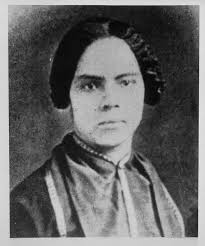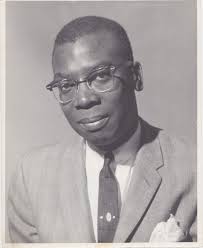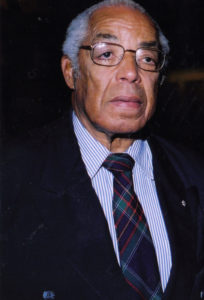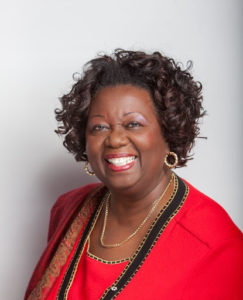This blog post was provided by Sarah Onyango from Black History Ottawa.
How many Canadians within and outside the Black community know that we are in the midst of the International Decade for People of African Descent, a U.N. initiative that started in 2015 to get member states to meaningfully improve the welfare of their “melanated” citizens?
Unsurprisingly, very few are aware of this initiative which is meant to guide governments as they work on adopting the policies needed to achieve recognition, justice, and development, the three pillars of the decade. With February being Black History Month, I feel there is no better time to remind people of the contributions of some of the many Black Canadians who did not wait for this U.N.-mandated decade to push for respect, dignity and justice for all.
Here are 4 Black Canadians who have left a lasting legacy:

Mary Ann Shadd Cary (1823 – 1893) was an anti-slavery activist, journalist, publisher, teacher, and lawyer born in Wilmington, Delaware. She moved to North Buxton, Ontario with her family in 1858, and was the first black woman publisher in North America and the first woman publisher in Canada. Shadd Cary edited The Provincial Freeman, established in 1853. Published weekly in southern Ontario, it advocated equality, integration and self-education for Black people in Canada and the United States. Mary Ann traveled widely in both countries to increase subscription to the paper, and to publicly solicit aid for runaway slaves. Although it only ran for a few years, The Provincial Freeman was a crucial platform for the voices of Black Canadian anti-slavery activists. Shadd Cary’s family was involved in the Underground Railroad helping people escaping from slavery. She returned to the United States during the American Civil War where she recruited soldiers for the Union. She taught, went to Howard University Law School, and continued advocacy for civil rights for African Americans and women for the rest of her life.

Born in New Glasgow, Nova Scotia, James Calbert Best (1926-2007) rose through the ranks of the federal civil service to become Canada’s first Black assistant deputy minister and first Black high commissioner. Activism came naturally to the son of renowned activist Carrie Best, who spent a lifetime fighting segregationist practices in her province. Best earned a bachelor’s degree in political science and a diploma in journalism from the University of King’s College in Halifax and also did post-graduate work in public administration before moving to Ottawa. Best arrived in Ottawa in 1949 to launch a 49-year career as a union activist, senior public servant and, eventually, high commissioner to Trinidad and Tobago. While Assistant Deputy Minister at the then Department of Employment and Immigration, he worked closely with the Deputy Minister and Minister to relax immigration laws to bring 604 Vietnamese boat people from aboard the Hai Hong to Canada in late 1978. He was co-founder of the Civil Service Association of Canada (CSAC), which evolved into the Public Service Alliance of Canada, and served as CSAC’s first president, from 1957 to 1966. In this role, Cal worked tirelessly, organizing, lobbying, and researching with McGill University to develop the right system of collective bargaining for the civil service. He served as director, personnel and administration, Office of the Comptroller of Treasury (1966–69); director-general administration, Department of Supply & Services (1969–70), and assistant deputy, Department of Manpower and Immigration, from 1970 to 1975. He was seconded to the Commonwealth Secretariat in 1975 and served in London for two years. He travelled widely, sharing his expertise with many Commonwealth governments. Best retired in 1990 after finishing his term as High Commissioner to Trinidad and Tobago.

Jamaican-born Bromley Armstrong (1926-2016) migrated to Canada in 1947, at the age of 19. This trade unionist, community organizer and activist became a key figure in the early anti-discrimination campaigns in Ontario that led to Canada’s first anti-discrimination laws. He started his professional life as a factory worker at Massey Harris from 1948 to 1956. He was an active leader in the United Auto Worker (UAW Local 439) who devoted his life to ensuring equality for victims of discrimination. In 1954, he led a delegation to Ottawa insisting the federal government change their restrictive immigration policy with respect to people of colour. Additionally, he will mostly be remembered for the test cases he conducted in Dresden, Ontario restaurants that were refusing to serve people of colour. A strong champion of community-based social action, he founded many organizations, including the Urban Alliance on Race Relations, Black Business and Professional Association, and Canadian Ethnocultural Council. He has also served on the Ontario Human Rights Commission, Ontario Labour Relations Board, Toronto Mayor’s Committee on Community and Race Relations, Ontario Advisory Council on Multiculturalism, and Board of Governors of the Canadian Centre for Police-Race Relations.

Born on the beautiful island of Grenada, Jean Augustine (b.1937) is a social justice advocate, retired educator, and trailblazing politician. She was the first Black woman elected to Canada’s House of Commons. From 1993 to 2006, Augustine was a Liberal MP for the riding of Etobicoke—Lakeshore in Ontario. She served as a member of Cabinet (2002 to 2004). Before her election, she had been a school principal. Augustine served as the Parliamentary Secretary to Prime Minister Jean Chrétien from 1994 to 1996; she was Minister of State for multiculturalism (and the status of women) from 2002 to 2004. She worked to remove the rule restricting statues on Parliament Hill to dead monarchs or nation-building prime ministers, and as chair of the National Liberal Women’s Caucus, she tabled the motion that led to the Famous Five statue commemorating the women who fought the “Persons Case” for political equality. Augustine also put forward the motion in 1995 that established February as Black History Month in Canada.
Whether their efforts have led to more just legislation, more representation in government, more inclusive cultural institutions or increased racial diversity in festivals, media and sports, Black Canadians have always been at the forefront of campaigns for justice and equality. Hence, why all Canadians should make an effort to learn of these contributions throughout the year, not just in February.